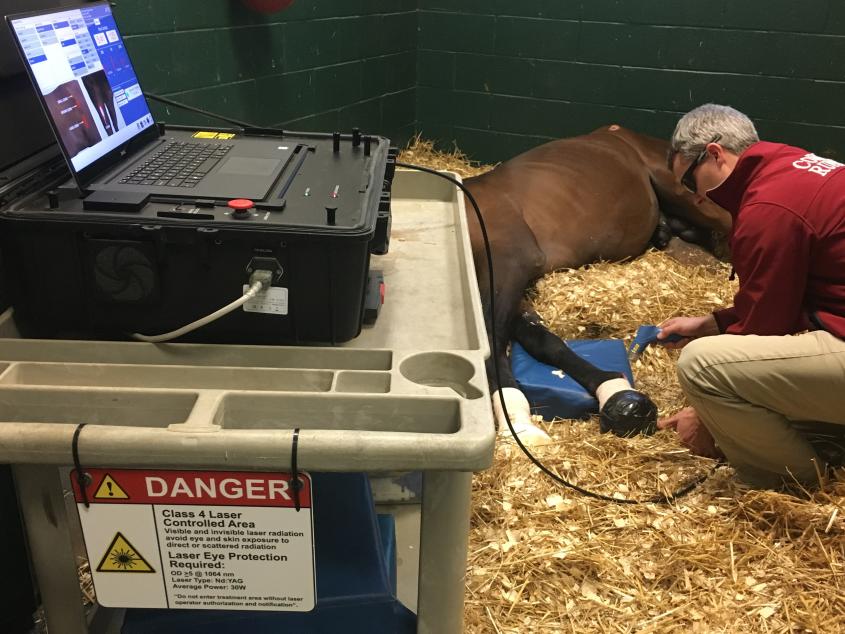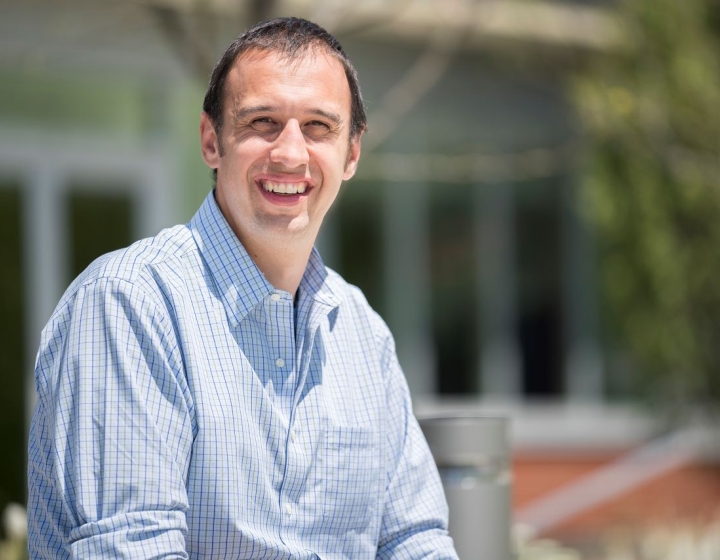Regenerative laser therapy proves beneficial for equine athletes at Cornell Ruffian Equine Specialists
John Pigott, D.V.M. ’09, a veterinary surgeon with Cornell Ruffian Equine Specialists, has already treated roughly 30 equine athletes with a Class IV Regenerative Laser Therapy (RLT) laser purchased this summer. “There is good evidence that the laser has a beneficial effect on decreasing inflammation, speeding wound healing and improving the quality of repair in tendon and ligament injuries,” says Pigott. “We wanted to be able to offer this additional therapy to our patients as a non-invasive way to provide relief and better treat the injuries these athletes sustain.”
Part of a classification of very powerful “cold lasers” (those not used for cutting or destroying tissue), the Class IV laser is used with adjunctive therapies as part of a multimodal approach. For example, regenerative laser therapy may be used in combination with stem cells, platelet-rich plasma or shock-wave therapy.
Pigott says they begin RLT as soon as possible after diagnosis, such as after receiving magnetic resonance imaging (MRI) results. RLT has a potent anti-inflammatory effect that aids in pain relief and stimulates drainage from the lymphatic system. Cornell Ruffian Equine Specialists has found it beneficial to incorporate RLT into treatment for a variety of acute and chronic injuries such as tendon/ligament damage, laminitis and external wounds. “We also use it to decrease inflammation in the tissue around fractures,” he adds. “It brings edema down and stimulates cells so there’s more energy available for healing.”
For chronic conditions such as osteoarthritis, sore backs, necks and sacroiliac discomfort, RLT can improve range of motion and reduce stiffness. Sedation isn’t necessary during treatment and, because it’s on-site in the hospital, doctors can customize the treatment protocol to deliver the most targeted therapy possible. This could be administered as often as three or four times a day, depending on the condition being treated.
The laser was purchased in part with funds from a client who believed in the potential of the laser to aid in healing; the horse was then treated with laser therapy daily. Pigott says, “For that horse, the laser’s results in wound healing and decreasing inflammation associated with laminitis were amazing.”
Pigott cautiously points out since it’s typically part of a multi-modal treatment approach in Cornell Ruffian Equine Specialists, it is difficult to quantify the impact from laser as a sole modality in their clinical setting. However, a recent equine case-controlled laser study at another university demonstrated very promising results.
“Further case-controlled research involving this therapy, to better define the depth of penetration and histologic effect, is still needed,” he says. “But my clinical impression has been very positive.”
By Cynthia L. McVey






